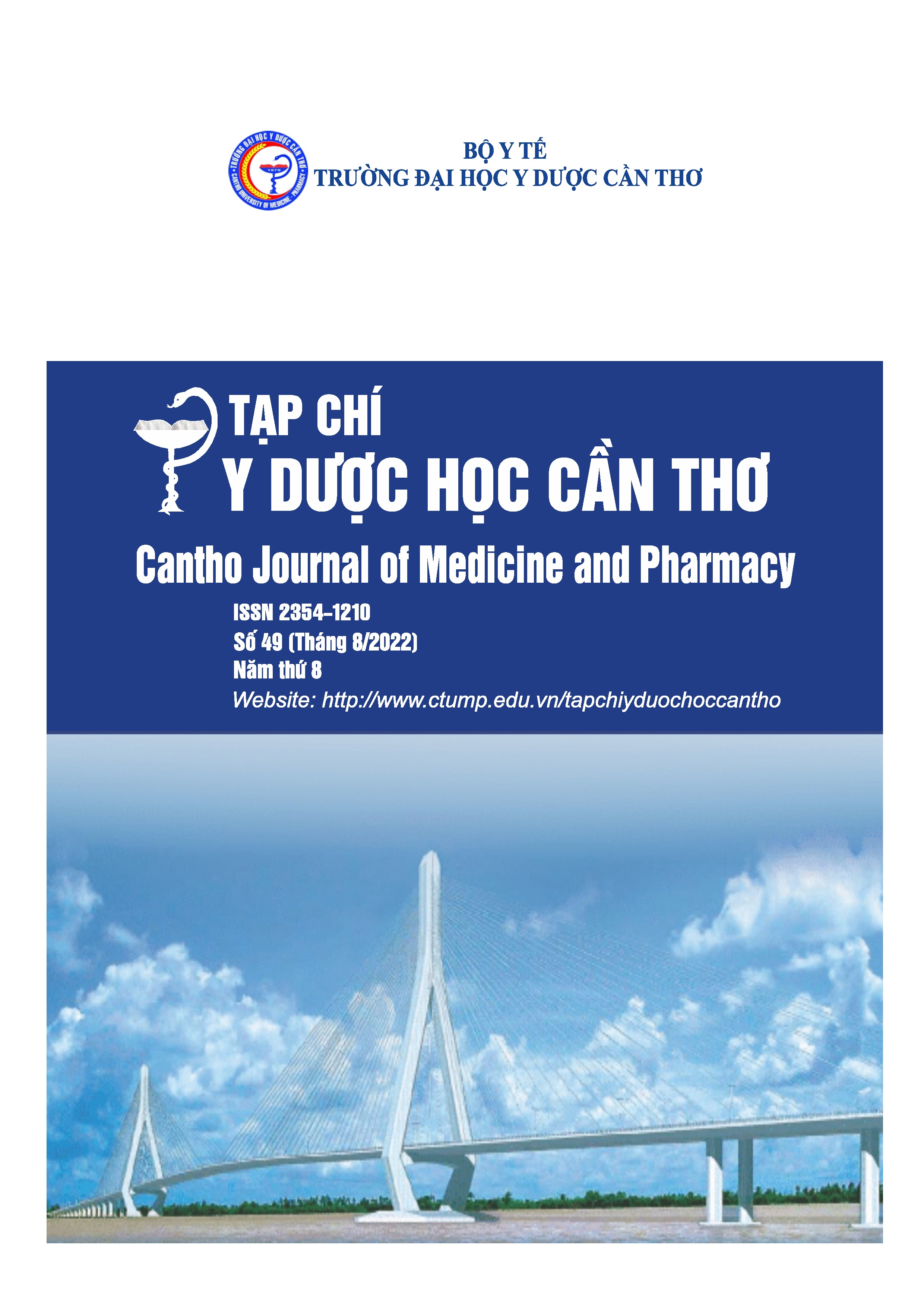ANATOMICAL CHARACTERISTICS OF THREE GRAPE (Vitis vinifera L.) VARIETIES GROWN IN NINH THUAN - VIET NAM
Main Article Content
Abstract
Background: Grapes (Vitis vinifera L.) are known not only as a fruit tree but also as a medicinal herb. Grapes contains various phenolic compounds, flavonoids and stilbenes. Therefore, grapes has different pharmacological effects like anti-inflammatory antioxidant, anti-inflammatory, anti-cancer, antimicrobial, antiviral, cardioprotective, neuroprotective, and hepatoprotective activities. In Vietnam, grapes are cultivated in some regions but there has been no anatomy research on these grape varieties. Objectives: Contributing to distinguish grape varieties, in this study we examine the anatomical characteristics of stems and leaf blades of three grape varieties grown in Vietnam, including NH.01.48, Red Cardinal and Sauvignon Blanc. Materials and method: Anatomical characteristics of three grape varieties grown in Vietnam (NH.01.48, Red Cardinal and Sauvignon Blanc) was analysed, described and photographed. Results: Stems usually rounded, collenchyma was present usually at the stem epidermis, pericycle form sclerenchyma groups, possible phloem fibers; cork cambium is found within the pericycle in V. vinifera L. var. NH.01.48 and V. vinifera L. var. Sauvignon Blanc. V. vinifera L. var. Sauvignon Blanc leaves have range of multicellular hairs. Conclusions: Anatomical characteristics of three grape varieties were described and performed with detailed pictures.
Article Details
Keywords
Grape, anatomy, V. vinifera L. var. NH.01.48, V. vinifera L. var. Red Cardinal, V. vinifera L. var. Sauvignon Blanc
References
2. Nguyễn Thế Cường (2012), Nghiên cứu phân loại họ Nho -Vitaceae Juss ở Việt Nam, Luận án tiến sĩ sinh học, tr.42-47.
3. Phùng Thanh Long, Đỗ Thị Hà, Hà Vân Oanh và cộng sự (2017), “Đặc điểm thực vật và giải phẫu của cây Nho rừng”, Tạp chí Dược liệu, 22(2), tr.120-123.
4. Devi S. and Singh R., (2017), “Evaluation of antioxidant and anti-hypercholesterolemic potential of Vitis vinifera leaves”, Food Science and Human Wellness, 6(3), pp.131-136.
2. Georgiev V., Ananga A., and Tsolova V., (2014), “Recent advances and uses of grape flavonoids as nutraceuticals”, Nutrients, 6(1), pp.391-415.
3. Isanu M., Karimah H., Pramastya H., and Fidrianny I., (2021), “Phytochemical compounds and pharmacological activities of Vitis vinifera L.: An updated review”, Biointerface Research in Applied Chemistry, 11(5), pp.13829-13849.
4. Kataliníc V., Možina S. S., Sroza D., et al. (2010), “Polyphenolic profile, antioxidant properties, and antimicrobial activity of grape skin extracts of 14 Vitis vinifera varieties grown in Dalmatia (Croatia)”, Food Chemistry, 119, pp.715-723.
5. Nassiri-Asl M., and Hosseinzadeh H., (2016), “Review of the pharmacological effects of Vitis vinifera (Grape) and its bioactive constituents: An update”, Phytotherapy Research, 30(9), pp.1392-1403.
6. Rockenbach I. I., Rodrigues E., Gonzaga L. V., et al. (2011), “Phenolic compounds content and antioxidant activity in pomace from selected red grapes (Vitis vinifera L. and Vitis labrusca L.) widely produced in Brazil”, Food Chemistry, 127(1), pp.174-179.


